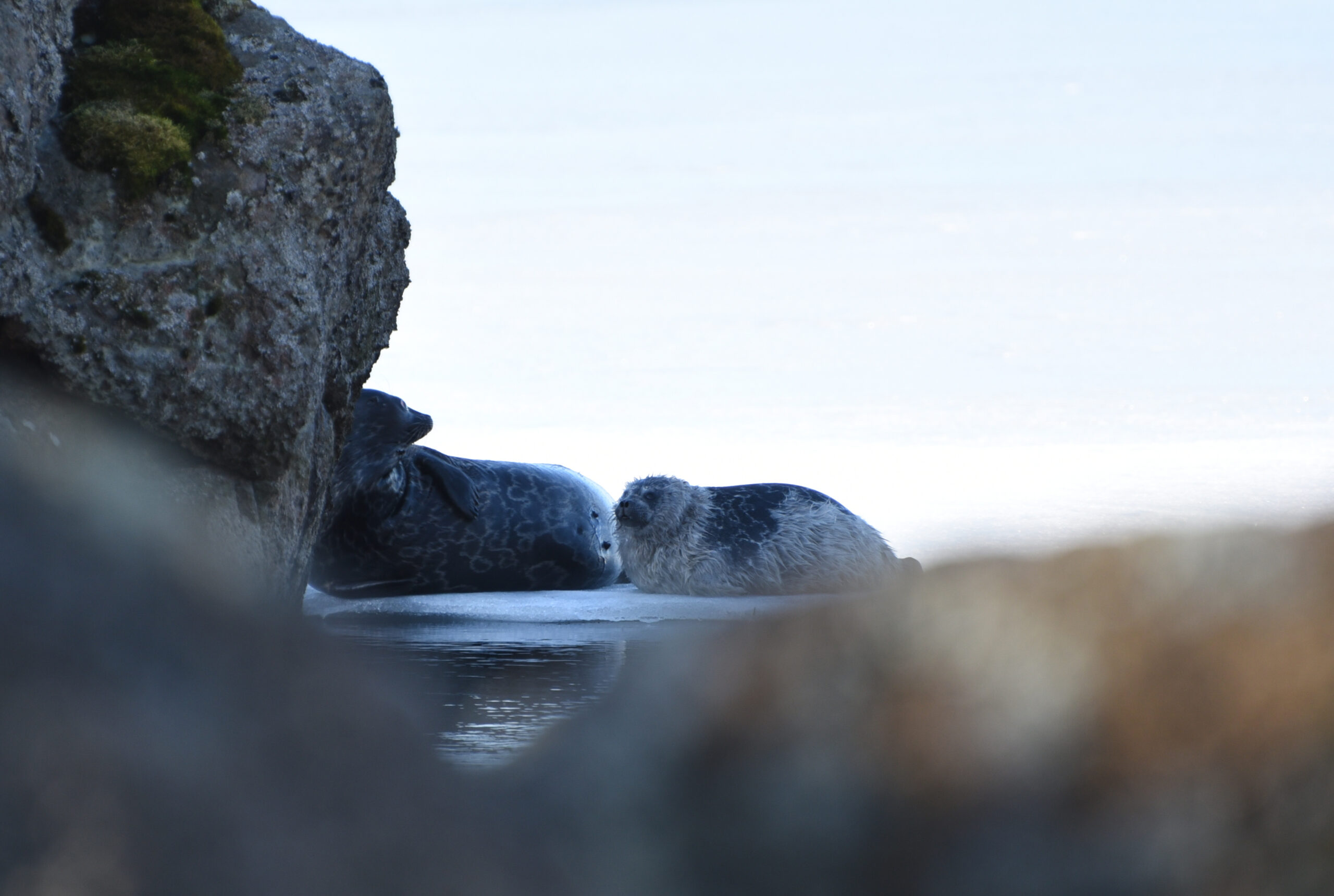As billions of people on Earth, the working situation of biologist researchers is impacted by the COVID-19 pandemic. However, all conservation actions cannot be postponed. Our grant receiver Vincent Biard writes about the new daily routine with his Saimaa ringed seal project and his thoughts on this special time.
Biard’s blog post is part of the Environmental Research in the time of COVID-19 blog series, where environmental researchers talk about the effects of the pandemic.
For the best of everyone and to prevent the further spread of the virus, the University of Eastern Finland closed its facility in mid-March. After a chaotic day of verifications and planning (e.g. are all the freezers working well, do I have all the essential things with me, what about my office plants…), the Saimaa ringed seal research switched to remote work.
Although the closing of the laboratory facilities has delayed some international collaborations, most of our research is conducted normally. Indeed, being on the campus or at home does not really change anything while working on computers. Our team still has its daily “coffee” meeting, but online, and I spend most of my time analysing our Photo-ID data.

Population monitoring and conservation actions cannot be postponed or canceled
It is difficult to know what the impact of the pandemic on the seal will be. Some might think that the movement restriction implemented in Finland would decrease the recreational usage of the Lake Saimaa and therefore, decrease seal disturbance. However, this is only speculative. It does not seem that the virus affects seal species, which is quite a relief concerning the critical status of the Saimaa ringed seal population.
Nonetheless, we remain careful in planning any of our field actions, both concerning seals and humans’ interactions. The Photo-ID 2020 data collection is maintained for this Spring. The majority of the photographers of our team live in the direct vicinity of Lake Saimaa and will thus not involve long-distance travelling. Besides, photographers are usually alone on their boat, limiting human interactions, and keeping a distance of at least 150m with seals which prevents the virus from spreading to the seals.
UEF researchers also participated in the lair census in late March, organised by Metsähallitus, respecting all the governmental recommendations in terms of people gathering. The historically mild winter resulted in dramatic breeding conditions for the Saimaa ringed seal, and as expected, high pup mortality. However, successful birth was observed in an artificial lair tested by UEF researchers, giving us hope in this approach to enable seal breeding in the future.
![20200329_093824[9231] (1) 20200329_093824[9231] (1)](https://nessling.fi/wp-content/uploads/2020/05/20200329_0938249231-1-scaled.jpg)
![Keinopesakuutti[9210] (1) Keinopesakuutti[9210] (1)](https://nessling.fi/wp-content/uploads/2020/05/Keinopesakuutti9210-1-1200x806.jpg)
The artificial lair (left) used by the female Saimaa ringed seal Phs196 to give birth to her pup (right). The artificial lair provides the pup shelter against winter weather conditions and predators. It mimics the natural snowdrift normally used by the seal. It is the second birth event recorded in such a structure (previous in 2018). Pictures: left, UEF, 2020; right, Mervi Kunnasranta, 2020.
What can conservation biologists learn from the COVID-19 pandemic
Despite the tragic consequences of the COVID-19 pandemic, it interestingly reveals how a single action or change, in this case the virus, can result in global perturbations. And, as conservation biologists, we are trying to find this small action that will benefit our target population. The previously mentioned artificial lair is one of these exciting examples. By providing long-lasting winter habitat for the Saimaa ringed seal, we are preserving successful breeding in mild winter conditions.
Although artificial lairs do not solve all the threats faced by the Saimaa ringed seals, they represent a breath-taking step in its conservation. Only by going step-by-step, we will be able to face these regrettable times for our health, but also, our planet.

Vincent Biard is a PhD student at the Environmental and Biological Sciences department form the University of Eastern Finland. His research, titled “Behaviour genetics on the endangered Saimaa ringed seal population”, is funded by the Nessling foundation.
Twitter: @vincent_biard

